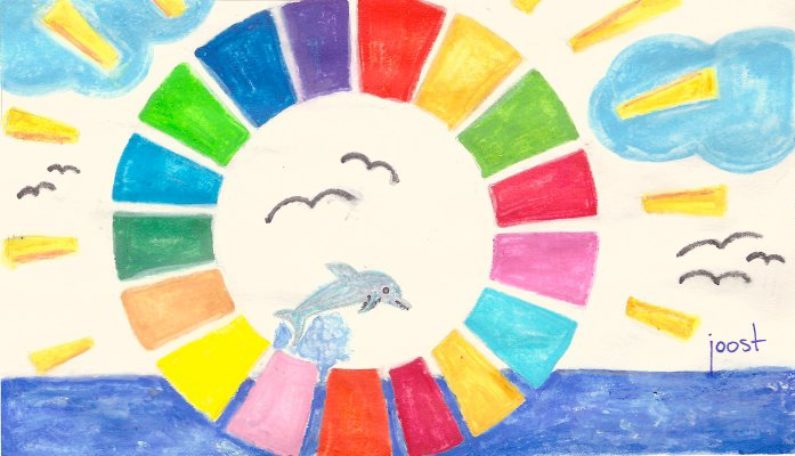How Organisations Can Contribute to UN’s Global Goals. Are You In to Help Me?
Last month the United Nations adopted 17 new Global Goals for sustainable development by 2030. Now what?
The #GlobalGoals aim to stimulate action over the next 15 years in areas of critical importance towards building a more equitable and sustainable world for all.
My first reaction is feeling overwhelmed. What a lot. How can we achieve so many goals? When I work with leadership teams, I tell them that a maximum of two to three goals can be really accomplished, anything more leads to confusion and a scattered focus.

Then a thought pops up if I’d agree with all of them? Which is of course of little relevance. I’m sure that most goals would be approved by the generations to come. And that’s what triggers me to get into action.
But how to take this further?
As I wrote in a previous post, I strongly believe that organisations can play a crucial role in creating a world that would be approved by the future. Not bound by any borders, they serve consumers all over the globe, and their ability to contribute to a better world is significant. So, how can organisations act on these goals? And I’m not talking about just putting a logo on the Partners page of the Global Goals’ website.
To contribute to a sustainable world, would an organisation not have to be sustainable itself?
Buddhist Zen master Thích Nhất Hạnh always refers to the connection between everything, especially when addressing wars, crimes, famine, crises, etc. “That is like that, because this is like this”, is one of his famous quotes. In other words, poverty and scarcity exist there, because we keep scarcity alive here (e.g. profit-driven organisations, self-centered behaviour, lack of abundance-thinking).
Could it be then that making organisations sustainable would be the best way to contribute to a sustainable world? Interesting question!
So, what would make an organisation a sustainable system? The principle of ‘The Three Pillars of Sustainability‘ states that for an organisation to be completely sustainable, three areas need to be covered:
- Economic Sustainability; the ability to support a defined level of economic production indefinitely.
- Social Sustainability; the ability to function at a defined level of social well-being indefinitely.
- Environmental Sustainability; the rates of renewable resource harvest, pollution creation, and non-renewable resource depletion that can be continued indefinitely.
Clearly there’s still a long way to go. Luckily it looks like most of the 17 Global Goals fit neatly in one of the three sustainability areas. That’s at least something for a start.
Acting on the Global Goals – a first draft
I believe that a first step to act on these goals is to facilitate the possibility for exploration and dialogue in organisations. To make people aware of where these big topics – that always seem to be far away – exists in their own lives. Instead of sending boxes with food to a country in need, bringing the topic much closer to home.
These thoughts triggered me to start the following project. It’s a draft, and I’m fully aware that I can never do this by myself, so please write all your ideas and suggestions in the comment box.
- For each Global Goal I’d like to organise ‘Exploration Circles’. These circles are inspired by an ancient Maori ritual about conflict and dialogue, where different parties lay on the ground. Looking at the same sky – without seeing each other – and supported by the same earth, they talk. I envision physical circles as well as virtual ones (a teleconference where participants lay on the floor with the phone in their hand). Clearly I need more ideas and participants here.
- The purpose of the circle is to explore how a specific Goal shows up in people’s life. For instance Goal 1: No more poverty. Questions to explore in the circle could be: “What is poverty? Where does poverty or scarcity show up in my life/business/community/family? What could be my role in reducing poverty in my environment?” By the way, if you think there is no poverty or scarcity in organisations, think competition, jealousy about promotions and budget fights.
- All the generated input from the circle will lead to an article on LinkedIn with three insights, approaches, or ideas, that can be used by organisations. So in the end there will be 17 articles, one for each Goal. We want to record instruction videos about how to make each Goal alive in your organisation, as well as making facilitators available, that can offer support in the conversations. Of course, it would be great to spread the news and gain more momentum via other media. Again, any ideas or suggestions are welcome.
Are you in? Please write your thoughts, suggestions, participation, inspiration, and ideas in the comment box below. And thanks a lot for sharing this post, so it can reach as many supporters as possible. #2030NOW

